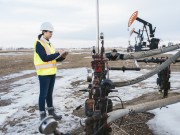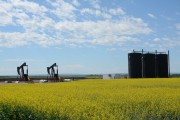Last month, the Canadian government released its first cut of proposed regulations to mitigate methane emissions from the oil and gas industry. This begins to deliver on the country’s commitment to reduce methane emissions by 45 per cent by 2025, and align Canadian rules with those in the U.S. and Mexico.
These regulations set the stage for Canada to catch up to the successful and cost effective action taken in U.S. states such as California, Colorado and Ohio. With public comment now open on the Canadian draft regulations, some key changes would allow Canada to take meaningful action in one of the cheapest areas for greenhouse gas reductions.
Measured support
The draft Canadian methane regulations generally garnered support from both environmental groups and industry, with more concern over timelines for implementation and government messaging respectively. There’s good reason for that support as the estimated cost of these reductions would be just under $12/tonne.
That isn’t to say that the investment needed isn’t insignificant. Between now and 2025, Canada estimates the regulations will cost industry $2.5 billion to follow, mostly in capital costs to update equipment installed to eliminate, capture or destroy methane. Once this investment is made the methane reductions are locked in for the entire life of that equipment.
How much is that?
There continues to be investment into the Canadian oil and gas sector to maintain or grow production. Forecasts published by the Alberta Energy Regulator prior to the announcement of these draft regulations showed expectations for growing investment in Alberta’s oil and gas sector between now and 2025; totalling $113 billion. Over the same period, Canada estimated the methane rules would require a $1.7 billion investment for Alberta operations to comply – a mere 1.5 per cent of the total to be invested to expand or sustain oil and gas production.
Further, these costs don’t account for the value of the methane conserved due to the regulated actions. Methane is the main component of natural gas, the same gas used to heat most homes and an important industrial feedstock. Canada currently allows for the waste of enough methane to heat all the homes in Edmonton and Calgary combined. Extrapolating from Canada’s cost-benefit analysis, Alberta alone would conserve around $300 million worth of gas by 2025 under the draft regulations. Deducting the value of this conserved gas, the regulatory cost ends up being only 1.2 per cent of industry spending through to 2025, with these financial and climate benefits continuing to accrue past that date.
Cost effective reductions
It is clear reducing methane through regulations would be highly cost effective. Not only do they demonstrate a real commitment to reducing Canada’s oil and gas sector contribution to climate change, they also improve the energy efficiency of the sector and help conserve an important energy resource. With some minor tweaks to these rules to cover all potential sources of methane and requiring quarterly facility inspections to find and address leaks, Canada could become the global example of how to manage this potent greenhouse gas.







